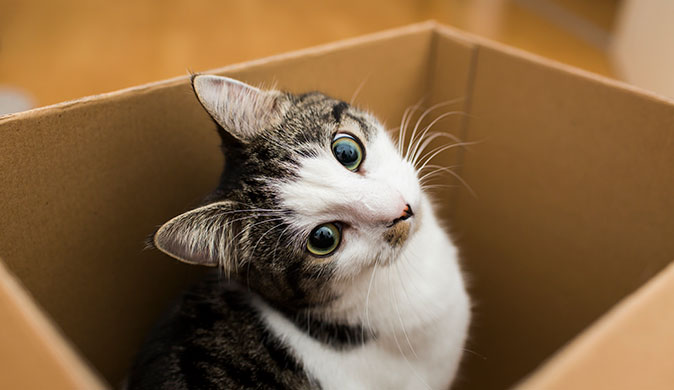Here is a Terrific Article from Home Care Buzz, a First American Home Warranty Publication.
Before the Move
Moving can be stressful for people, so just imagine how it is for your four-legged family members. They can easily get stressed when there’s unusual activity at home or when they’re introduced to a new environment. Before, during, and after your move, maintaining the same schedule for feeding, treats, and bedtime will help keep anxiety levels down and allow them to acclimate more quickly.
If your pet hasn’t spent much time in a crate, carrier, or car, in the weeks leading up to the move, prepare your pet by getting them used to a crate or pet carrier. If they’ve never been in a crate or carrier, introduce the idea slowly. Start by putting a blanket and treats inside, leaving the door open, and making the experience a positive one.
Try carrying your small pets around the house in the crate. Then try taking short drives, starting with 10-minute rides, then longer 20-minute rides. You’ll find that your pet’s anxiety will decrease as they becomes more accustomed to sights and sounds of car travel.
If you are traveling by car out of the area with overnight stops along the way, find out before you hit the road which hotels are pet friendly. If your trip involves air travel, be sure to ask the airline about their pet travel requirements.
Veterinary Care
If you’re moving out of the area, advise your vet so you can take medical records and any prescription medications with you. Ask if they can recommend another vet in your new neighborhood. Make sure to update your pet’s tags or microchip information to your new address and phone number.
If you know that your pet is the nervous type, talk to your vet beforehand about your travel concerns. They may recommend sedating your pet during this stressful time.
On Moving Day
The best way to reduce moving day stress for your pet is to keep them in the quietest room or space available, keeping them in their carrier if possible. Make sure you check in on them regularly, and try to feed or walk them at the time you normally would. It’s also helpful to put a sign on the door that says “KEEP CLOSED – PETS INSIDE!”
Time to Hit the Road
Traveling with your pet by car will require extra stops along the way for bathroom breaks and a little leg stretching too, which will add extra travel time. Be prepared with a “travel kit” that includes enough food, treats, kitty litter, and toys to last the length of your trip and keep them comfortable during the first few days of unpacking. Some animals feel more comfortable if you throw a blanket over their carrier during the car ride so they can’t see the environment changing outside.
Welcoming Home
When you arrive at your new home at the end of your long journey, don’t be tempted to set your dog or cat loose in the house. Instead, find a quiet space, like a bedroom or basement, away from the noise and distraction of movers and unpacking. For cats, make sure doors and windows are closed and any holes or crawl spaces are covered up so kitty won’t be out of your reach
Once the movers have gone, give your pet a few days in the new home to adjust. Once they seem comfortable, slowly introduce them to other rooms in the house.
Don’t be surprised if your cat hides away for a few days. They may choose their cat carrier or covered pet bed (the darker, the better). They may also need coaxing to finish a meal or even try to escape, in hopes of finding familiar surroundings. Soon they’ll realize that their new home is nothing to be afraid of and be back to their adorable, lovable selves!
Your dog on the other hand will likely be eager to explore his or her new home and neighborhood. Taking walks at your usual time and sticking to the same route for several days will help your dog adjust. For anxious dogs, keep them crated when you leave the house until you are comfortable allowing them to roam freely inside their new home.
Moving with Fish
Fish respond strongly to stress and moving can be extremely traumatizing. While not ideal, you can transport them short distances in bags filled with their tank water, but if you have a long distance to travel it’s best to give them a new forever home with a loving friend.
Moving with Rabbits and Guinea Pigs
Both rabbits and guinea pigs suffer from change or being moved around. Their hearts are particularly susceptible so please take care and make sure they are moved in a warm, comfortable, small carrier.
Moving with Birds
Birds, like most pets, are very jittery about change. So even when the smartest parrot balks at the idea of being put in a cage, please do it on moving day. Keep their cages covered during transport to alleviate any extra anxiety from the outside environment.


